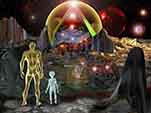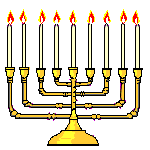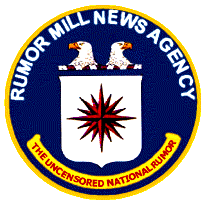AMOUNT OF TEAR GAS FIRED AT WACO SIEGE QUESTIONED
Investigators say more pyrotechnic rounds suspected
03/05/2000
By Lee Hancock /
The Dallas Morning News
© 2000, The Dallas Morning News
Crime-scene records, videos and photographs from the Branch Davidian siege call into question the FBI's account of where, when and how many pyrotechnic tear gas rounds were fired by its hostage rescue team at the end of the 1993 standoff, investigators say.
The Texas Rangers completed a lengthy final report last month on efforts to identify questioned evidence from the standoff and locate
a pyrotechnic tear gas projectile that disappeared in 1993 after it was photographed by a Department of Public Safety photographer.
The photographer's field notes show the projectile was "located about 200 yards northwest of the [compound water] tower," the Rangers report states. That means the device probably was fired from behind the building, and not from the area where FBI officials have previously said that only two such devices were launched that day, said investigators involved in the ongoing inquiries.
Based on the accounts from some FBI agents involved in the Waco operation and commercial television footage of the April 19 tear gas assault, investigators say they are also questioning whether members of the hostage rescue team, or HRT, may have fired pyrotechnic gas rounds on April 19, 1993, at a time far later than previously acknowledged.
One investigator also says the appearance of distinctive white smoke characteristic of M-651 pyrotechnic tear gas grenades on video recorded by a Waco television station about 12:09 p.m. suggests that one of the rounds might have been fired as the sect's compound began burning.
"With all that we are seeing, it seems quite probable that the HRT fired more pyrotechnic rounds than they've ever fessed up to," said the investigator. "You have to remember: They were running out of tear gas that day."
Congressional committees and the office of Waco special counsel John C. Danforth are looking into the matter with the Rangers' help.
Bureau officials did not return telephone calls. But they have previously said their agents fired only one or two of the military tear gas rounds during their tear gas assault. They have said those rounds were fired away from the sect's home, at an underground bunker, and were fired before 8 a.m. - hours before the compound caught fire.
More than 80 Branch Davidians died as the compound burned, and attorneys for surviving sect members and families of the dead have filed a federal wrongful death lawsuit alleging that the government's actions and negligence caused the 1993 tragedy.
Government's response
Government officials have insisted that their agents were not responsible. They have noted that 17 sect members had fatal gunshot wounds, one child was stabbed to death and a government arson investigation ruled that sect members deliberately set the compound blaze in three separate places.
But a fire investigation expert hired by the sect's attorneys has criticized the government fire inquiry as woefully inadequate and based on what he described as suspect evidence never before used in a major fire investigation.
Questions about what the government did on the final day of the standoff have mounted since FBI officials were forced last August to admit the use of pyrotechnic tear gas at Waco.
Top FBI officials had previously insisted that their agents used only nonflammable gas powder and nonburning, plastic tear gas shells known as "ferret" rounds in the April 19 assault. Attorney General Janet Reno had banned the use of anything capable of sparking fires when she approved the FBI's gas assault plan.
But in August, a former FBI official told The Dallas Morning News that at least two military pyrotechnic rounds, known as M-651s, were fired at Waco.
M-651 grenades burn a 20- to 30-second pyrotechnic charge to release a cloud of tear gas. The devices emit a distinctive white smoke while burning and are described in U.S. military manuals as being capable of sparking fires.
The FBI's admission that several of the grenades had been used, in violation of Ms. Reno's ban, prompted new congressional investigations and the appointment of Mr. Danforth to re-examine the government's actions in Waco.
Something was missing
Texas Rangers began their own inquiry early last summer. They were brought in to help investigate the Waco case just after it began and were asked by the Justice Department to retain custody of all key physical evidence after a 1994 criminal trial.
After years of denying all public requests for access to that evidence, federal authorities told the Rangers in 1998 that it could be viewed by an independent filmmaker.
That filmmaker, Mike McNulty of Fort Collins, Colo., told Rangers after being shown the evidence that one key item was missing: a spent gray projectile with a shiny brass top and a red stripe. The item had been photographed by a Department of Public Safety photographer, but it was never turned in or entered into the Rangers' computerized evidence logs.
The Rangers began an investigation to learn what the projectile in the picture might be and what happened to it. They also began trying to identify a 40-mm casing that was found in their collection of Waco evidence.
They were nearing a conclusion last August that the photo showed a spent M-651 pyrotechnic round and that the casing was also from a M-651 grenade when the former FBI official publicly admitted that several of the devices had been fired.
'Somebody pocketed it'
The Rangers searched through tons of stored evidence in Waco late last fall but never found the missing round.
"It's the only item that anyone can think of that was photographed and not entered into evidence," one investigator said. "You can't help but think that somebody pocketed it."
But the Rangers were able to determine more about where the missing projectile was photographed after a federal judge in Waco told the FBI last September that all Waco negatives and accompanying field notes from DPS photographers must be returned to Texas. The bureau had previously responded to DPS requests by sending a partial set of prints of the DPS crime scene photographs to Austin, officials in Texas said.
Field notes checked
After gaining access to their DPS field notes, the Rangers' February report states, their photographer determined that he photographed the projectile on April 30, 1993, in an area in front of the compound.
Investigators say that location suggests that the device was fired from the back side of the compound toward the building.
They say they have doubts about the FBI's claims that M-651s were shot only twice at the underground bunker and were aimed away from the compound because the spent M-651 photographed by DPS was found well behind where bureau officials said their agent fired.
"If it had been shot toward the bunker like they say, that shell should've been found on the back side and not the front," another investigator in Texas said. "Nobody had any logical explanation or reason for why it would be out in the area it was, unless they were firing at something else."
In a motion filed last week in U.S. District court in Waco, attorneys for the Branch Davidians noted that hostage rescue team members in a Bradley armored fighting vehicle on the back side of the building fired tear gas rounds into the kitchen just before it caught fire. That motion alleged that there is evidence that the rounds may have been pyrotechnic and could have triggered at least one of the three fires that quickly consumed the compound.
By that time, FBI agents in the Bradleys had fired almost all of the 400-round supply of nonflammable ferret rounds brought to Waco for the assault, records show. Notes found last fall at the hostage rescue team's headquarters in Quantico, Va., state that each of the Bradleys used by the FBI in Waco was stocked with M-651 rounds.
CLICK BELOW TO READ THE REST OF THE ARTICLE--
http://dallasnews.com/texas_southwest/43735_WACO05.html






































